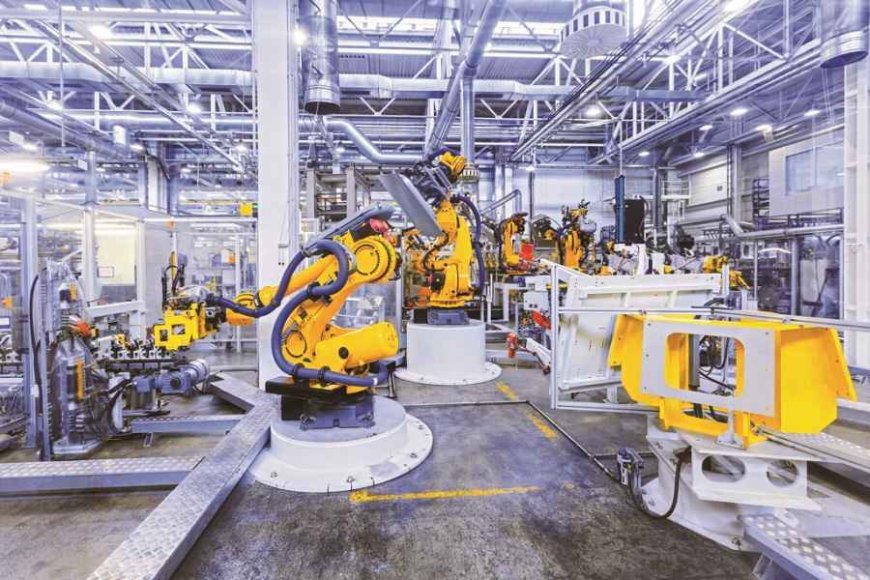Revolutionizing the Future: Exploring the Five Major Fields of Robotics
The realm of robotics has come a long way since its inception, evolving into a transformative force that permeates numerous industries

The realm of robotics has come a long way since its inception, evolving into a transformative force that permeates numerous industries and sectors. As technology continues to advance at an unprecedented pace, robots are becoming increasingly sophisticated, capable of performing complex tasks and pushing the boundaries of human capabilities. In this article, we will delve into the five major fields of robotics, highlighting their impact on society and the remarkable innovations that are shaping our future.
Industrial Robotics:
Industrial robotics has revolutionized manufacturing processes across various sectors, optimizing efficiency, precision, and productivity. These robots are designed to perform repetitive tasks with exceptional accuracy, speed, and endurance, reducing human error and enhancing overall output. With advancements in machine vision and artificial intelligence, industrial robots can adapt to changing environments, recognize objects, and collaborate with human workers seamlessly. They are instrumental in automating assembly lines, welding, packaging, and logistics, leading to streamlined operations and increased profitability for businesses.
Medical Robotics:
The field of medical robotics has witnessed remarkable advancements, bringing forth revolutionary solutions that enhance patient care, surgical procedures, and diagnostics. Surgical robots, such as the da Vinci Surgical System, have transformed minimally invasive surgeries by providing enhanced precision, dexterity, and visualization to surgeons. These robots can perform complex procedures with smaller incisions, minimizing patient trauma and speeding up recovery times. Additionally, robotic exoskeletons have emerged as valuable tools in rehabilitation therapy, aiding individuals with mobility impairments to regain independence and improve their quality of life.
Service Robotics:
Service robots are designed to interact with humans and assist them in various domains, ranging from hospitality and retail to healthcare and education. These robots are equipped with sensors, speech recognition, and natural language processing capabilities, enabling them to understand and respond to human commands. In the hospitality industry, robots can be seen delivering room service, guiding guests, and even performing concierge duties. In healthcare, robots assist in patient monitoring, medication dispensation, and elder care. The integration of service robots in these sectors enhances customer experience, reduces manual labor, and frees up human resources to focus on more complex tasks.
Agricultural Robotics:
Agricultural robotics, also known as agri-robotics, holds tremendous potential in addressing the challenges faced by the agricultural industry, such as labor shortages, increasing demand for food production, and environmental sustainability. Robots equipped with advanced sensors and imaging technologies can monitor crops, detect diseases, optimize irrigation, and precisely apply fertilizers and pesticides. Additionally, autonomous drones can survey vast farmlands, collecting data on soil conditions, plant health, and growth patterns. By leveraging these technologies, farmers can make data-driven decisions, minimize resource wastage, and maximize crop yields, leading to increased efficiency and reduced environmental impact.
Exploration and Space Robotics:
Exploration and space robotics have been instrumental in pushing the boundaries of human knowledge and expanding our understanding of the universe. Robotic rovers, like the Mars rovers Spirit, Opportunity, and Curiosity, have ventured into the depths of space, collecting invaluable data and images from distant planets. These robots are equipped with advanced imaging systems, analytical instruments, and autonomous navigation capabilities. They enable scientists to study the geological composition of celestial bodies, search for signs of life, and pave the way for future manned missions. Moreover, space robots assist in satellite deployment, repairs, and maintenance, ensuring the seamless functioning of vital communication and observation systems.
Advancements in robotics are not limited to the five major fields mentioned above. The scope of robotics extends to areas such as defense and security, disaster response, entertainment, and even personal robotics. In the defense sector, robots are utilized for bomb disposal, reconnaissance, and surveillance, minimizing the risks faced by military personnel. In disaster-stricken areas, robots can aid in search and rescue operations, navigating hazardous environments and providing assistance to survivors.
Entertainment robots, ranging from animatronic characters to robotic pets, offer companionship and amusement to individuals of all ages. These robots can mimic human movements, exhibit emotions, and engage in interactive play, enriching the entertainment experience.
Personal robotics focuses on developing robots for everyday use in households. From robotic vacuum cleaners to smart home assistants, these robots simplify household chores, monitor home security, and provide personalized assistance. They can perform tasks such as cleaning, cooking, and managing daily schedules, enhancing convenience and efficiency in people's lives.
Moreover, advancements in artificial intelligence and robotics are fostering interdisciplinary collaborations. Robotics is merging with fields like cognitive science, neuroscience, and machine learning, leading to the development of intelligent robots that can learn, adapt, and exhibit human-like cognitive abilities.
In conclusion, the five major fields of robotics discussed in this article are transforming industries and society at large. However, the reach of robotics extends beyond these fields, encompassing various sectors and domains. As robotics continues to evolve, it holds immense potential to revolutionize numerous aspects of our lives, paving the way for a future where human-robot collaboration becomes an integral part of our daily existence.
